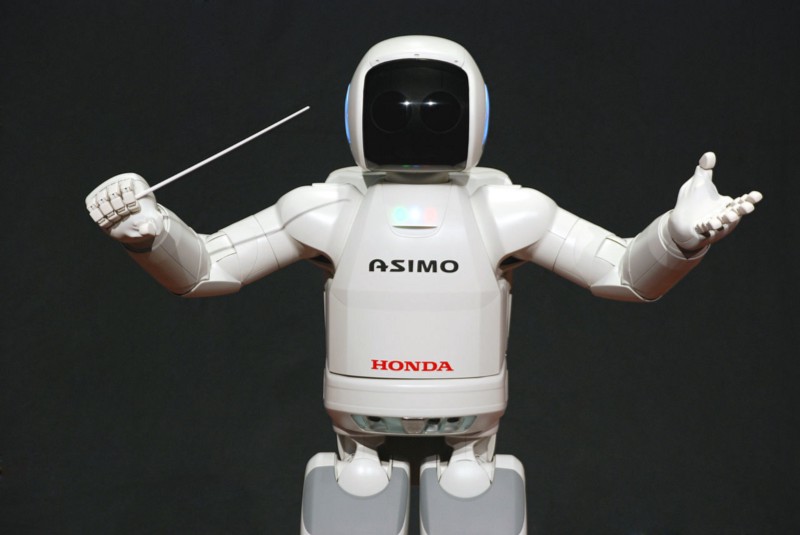

Mankind has always created robots in its own image. Since the very first description of an automaton in a Daoist text from the fifth century B.C., to the latest crop of disaster recovery bots that entered Darpa’s recent competition, we seem to have a compulsion for designing our artificial friends to look like us. Here’s a short history of humanoid robots.

Leonardo’s Robot
In 1495, famed inventor Leonardo da Vinci designed a suit of armour that moved as if there was a real person inside. It was operated by a series of pulleys and cables, and could stand, sit, move its arms, and even raise its visor to reveal nothing inside. The goal was merely to amuse Milanese royalty, but modern recreations of the device have shown that it was fully functional.

The Jacquet-Droz Automata
In 1774, Swiss watchmaker Pierre Jacquet-Droz, his son Henri-Louis, and Jean-Frédéric Leschot built a trio of automata that are still in use today. The first is “the musician”–a female robot that plays a custom-built organ by pressing the keys with her fingers. The second is “the draughtsman”–a young child robot that can draw four different images–and the third is “the writer”–another child robot capable of writing any custom text up to 40 characters long using a quill on paper. All three are startlingly lifelike. Their eyes follow their actions, and the musician even breathes while playing. You can see them at the Museum of Art History in Neuchâtel.

WABOT-1
The first digitally controlled anthropomorphic robot was built in 1970 at Waseda University in Tokyo. It had a limb-control system with tactile sensors for walking and gripping, a vision system that could measure distances, and a conversation system that could communicate in Japanese. The researchers estimated that it had the mental faculties of a child aged about one and a half. Its successor (shown in the video below) was able to play a keyboard by reading a musical score.

Asimo
In 2000, one of the world’s most famous robots was first assembled. Honda designed and developed Asimo as a multi-functional mobile assistant that could help people with poor mobility. It could recognize objects, gestures, sounds, and faces, allowing it to interact with humans, and was capable of fully autonomous navigation with a top speed of 1.8 m.p.h. Later upgrades bumped that to 3.7 m.p.h. and added the ability to climb stairs–something it spectactularly failed to do in its first demonstration in December 2006 but successfully completed a month later.

DRC-Hubo
Today, development of humanoid robots continues apace. The state-of-the-art for multifunctional automata recently debuted at Darpa’s Robotics Challenge, where a South Korean team earned victory with its robot, DRC-Hubo. The bot successfully completed a series of tasks that included driving a car, getting out of the vehicle, climbing steps, opening a door, drilling a hole in a wall, and crossing some rubble. The prize for victory? A tasty $2 million.


How We Get To Next was a magazine that explored the future of science, technology, and culture from 2014 to 2019. This article is part of our Robots vs Animals section, which examines human attempts to build machines better than nature’s. Click the logo to read more.
